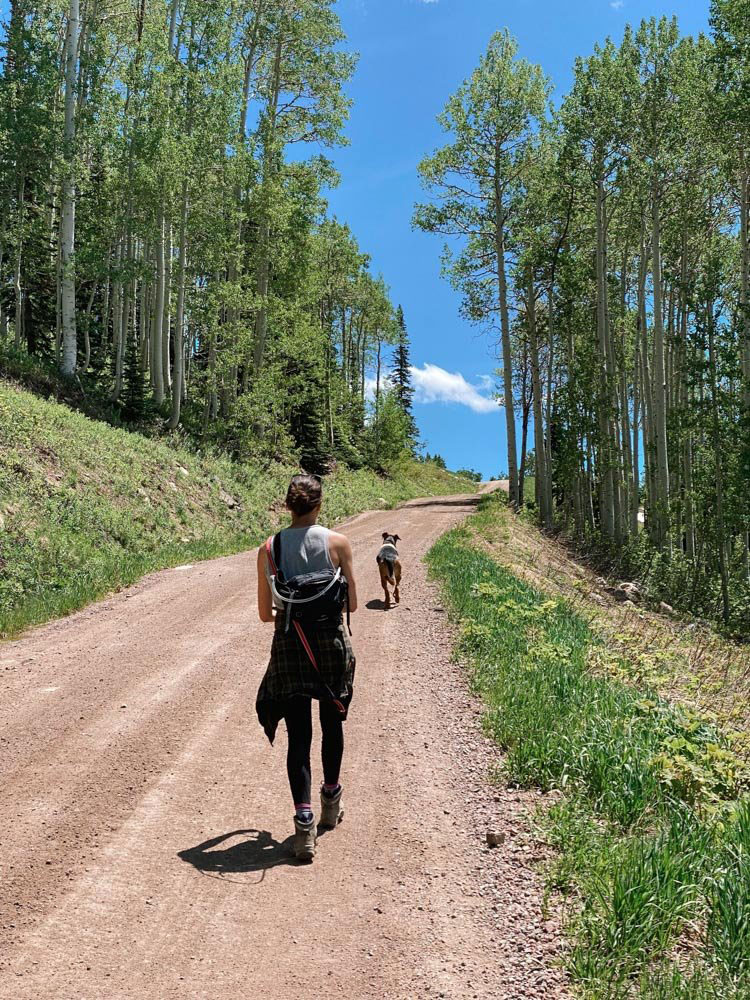How I’m Training to Hike My First Colorado 14er
This post may contain affiliate links. Please read my Disclosure & Disclaimer Policy for more information.
With it being our second summer living in Colorado, we’re making it a priority to hike our first 14er! Listed below are both tips related to nutrition and physical activity I’m incorporating to be prepared to hike to an elevation of 14,000 feet.

Colorado is home to over 50 fourteeners, or mountain peaks over 14,000 feet. Reaching the summit of one of these peaks will not only be exhilarating and exciting, but will also hold some of the best views.
Training Schedule to Hike My First Colorado 14er
When it comes to training, I always tend to keep it simple and focus on the 4Rs – rest, rehydrate, refuel and repair. These 4Rs focus on getting enough sleep, staying hydrated, and consuming balanced meals that focus on an adequate consumption of carbohydrates to refuel, and protein to repair muscles.
Nutrition
Consuming balanced meals are a great way to ensure proper nutrition. Focus on consuming adequate protein, carbohydrates and fats within each meal to provide your body the energy it requires to sustain this training schedule. Proper pre and post-workout nutrition is another way to properly nourish your body, promoting muscle growth and reducing the risk of injury. Another important aspect of nutrition is hydration – preventing dehydration is key to a successful hike!
Physical Activity
When training to hike a 14er, I will be focusing on steady-state cardio, high-intensity interval training, strength training, and flexibility and mobility to ensure my body will be able to withstand hours of scaling a mountain.
Steady-State Cardio
Steady-state cardio is a cardiorespiratory-based exercise, including movements that are low to moderate in intensity. This type of exercise can be sustained for an extended period of time, such as walking, jogging, or swimming.
For my steady-state cardio, I’m aiming to walk 4-5 miles each day during the week. Working from home, using a treadmill that goes underneath my desk has made this step goal possible. However, going for a 30-minute morning, afternoon, and evening brisk walk will also ensure 4-5 miles walked per day. During the weekends, I’ll get outside for a hike, focusing on carrying a heavy pack and choosing trails with steep elevation gains.
High-Intensity Interval Training
High-intensity interval training is a great way to improve your VO2max, the maximal amount of oxygen your body is able to consume. Increasing your VO2max allows your body to be more effective in generating activity.
To increase my VO2max, I will spend 10-minutes on our stationary bike increasing the intensity and the speed for a few minutes, then reducing the intensity for a few minutes; on repeat until the 10-minutes is complete. This will not only allow me to sustain my energy during our hike, but will also help strengthen my mental health to be disciplined to complete a 14er.
Strength Training
Focusing on full-body strength exercises will allow the body to climb a mountain for hours. Core training is a crucial aspect of strength training, as core muscles will help to keep stable on the uneven terrain as you’re ascending and descending a mountain. I weight lift 4-5 days a week, and spend 10-15 minutes on core training 3-4 times per week to increase both my muscular strength and endurance.
Flexibility & Mobility
Ending a workout focusing on both flexibility and mobility has several health benefits. This includes lowering the risk for injury, fewer aches and pains, improved posture and balance, improved strength and freedom of movement. At the end of each workout, I’ll spend 10-15 minutes performing both static and dynamic stretches to improve flexibility and full range of motion.
Have any questions on how I’m training to hike my first Colorado 14er? Comment below!

